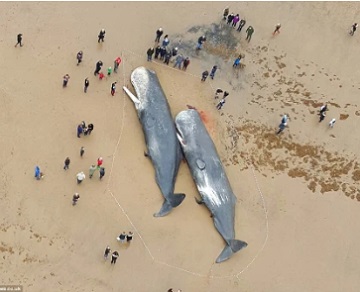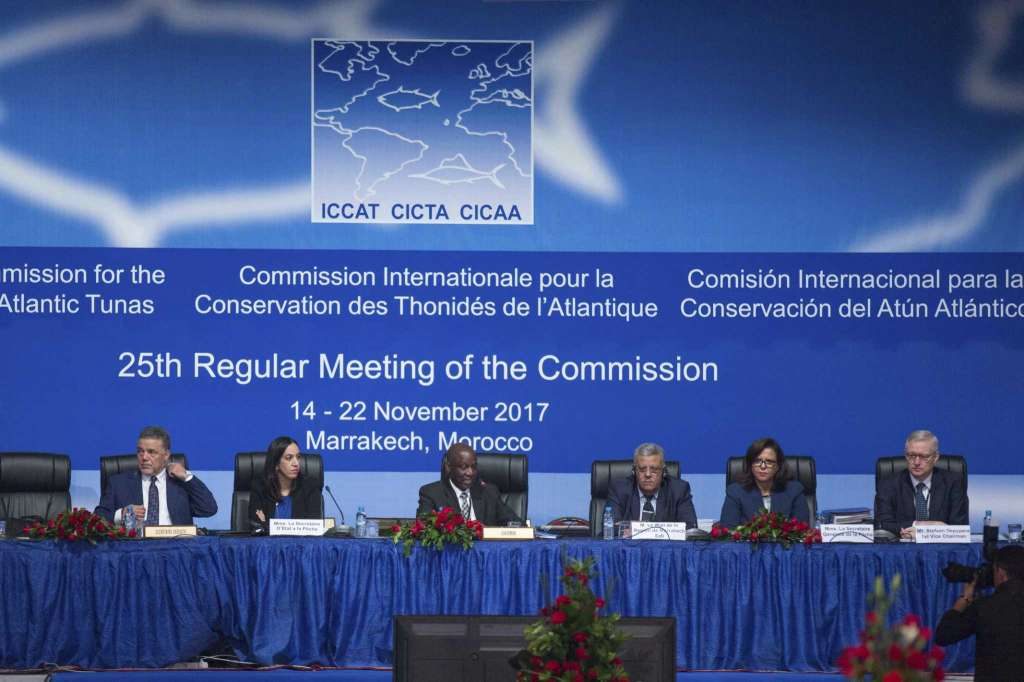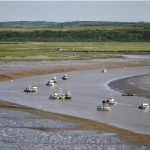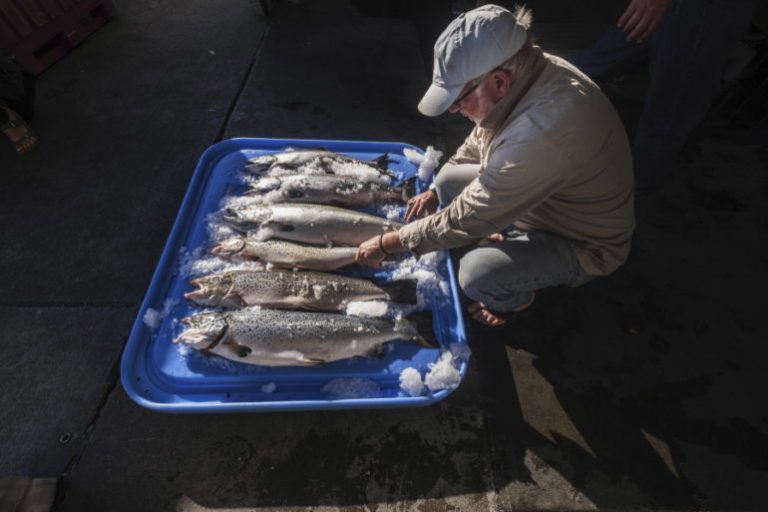Category Archives: Offshore Wind/Industrialization
Anticipating the winds of change: A baseline assessment of Northeastern US continental shelf surficial substrates
 The introduction of thousands of wind turbines along the North American Atlantic continental shelf over the next decade will constitute the largest regional change in marine substrates since the retreat of the Laurentide Ice Sheet over 14,000 years ago. Here, two large data sets, SMAST drop camera survey (242,949 samples, 2003 to 2019) and the US Geological Survey databases (27,784 samples, 1966 to 2011), are combined to derive sea floor surficial substrate probability maps for the Northeastern US continental shelf from Virginia Beach to the Gulf of Maine to 300 m depth (218,571 km2). Geostatistical models were used to estimate the probability of five geologic and one biogenic substrate types being present at a 250 m resolution, and the proportional contribution of each substrate type to the seabed composition at a 500 m resolution. By providing the first synoptic maps depicting the probability of a particular substrate or combination of substrates occurring at any location on the Northeastern US continental shelf, including planned wind energy sites, we aim to (1) provide insights regarding how substrates in the areas selected for wind energy development compare with other locations, (2) motivate the development of a priori expectations for ecosystem changes to inform monitoring and research efforts going forward, and (3) to provide a baseline characterization of the Northeastern US continental shelf surficial substrates to support robust examination of the future changes observed in areas impacted by wind energy installations. more, >>CLICK TO READ<< 11:44
The introduction of thousands of wind turbines along the North American Atlantic continental shelf over the next decade will constitute the largest regional change in marine substrates since the retreat of the Laurentide Ice Sheet over 14,000 years ago. Here, two large data sets, SMAST drop camera survey (242,949 samples, 2003 to 2019) and the US Geological Survey databases (27,784 samples, 1966 to 2011), are combined to derive sea floor surficial substrate probability maps for the Northeastern US continental shelf from Virginia Beach to the Gulf of Maine to 300 m depth (218,571 km2). Geostatistical models were used to estimate the probability of five geologic and one biogenic substrate types being present at a 250 m resolution, and the proportional contribution of each substrate type to the seabed composition at a 500 m resolution. By providing the first synoptic maps depicting the probability of a particular substrate or combination of substrates occurring at any location on the Northeastern US continental shelf, including planned wind energy sites, we aim to (1) provide insights regarding how substrates in the areas selected for wind energy development compare with other locations, (2) motivate the development of a priori expectations for ecosystem changes to inform monitoring and research efforts going forward, and (3) to provide a baseline characterization of the Northeastern US continental shelf surficial substrates to support robust examination of the future changes observed in areas impacted by wind energy installations. more, >>CLICK TO READ<< 11:44
And they call this “green” energy.
 The centerpiece of Biden/Harris “accomplishments” is the 2022 Inflation Reduction Act, which included $369 billion worth of green giveaways/grants, including 30 gigawatts of offshore wind turbines by 2030. Harris plans to spend $10 trillion in public/private funding on green initiatives. So, how is it going? On July 13, a massive blade from a wind turbine nearly as tall as the Eiffel Tower collapsed into the Massachusetts Nantucket Sound for no apparent reason throwing the tourist destination into economic crisis at the height of the summer season. More than six truckloads’ worth of debris was collected, with more still washing up weeks later. Miles of the island’s famous ocean beaches had to be closed for days due to the dangerous debris, yet the media coverage was negligible. more, >>CLICK TO READ<< by Arthur Keller 07:17
The centerpiece of Biden/Harris “accomplishments” is the 2022 Inflation Reduction Act, which included $369 billion worth of green giveaways/grants, including 30 gigawatts of offshore wind turbines by 2030. Harris plans to spend $10 trillion in public/private funding on green initiatives. So, how is it going? On July 13, a massive blade from a wind turbine nearly as tall as the Eiffel Tower collapsed into the Massachusetts Nantucket Sound for no apparent reason throwing the tourist destination into economic crisis at the height of the summer season. More than six truckloads’ worth of debris was collected, with more still washing up weeks later. Miles of the island’s famous ocean beaches had to be closed for days due to the dangerous debris, yet the media coverage was negligible. more, >>CLICK TO READ<< by Arthur Keller 07:17
The Offshore Wind Energy Scandal Is Even Worse Than You Think
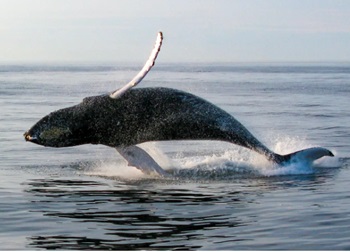 These 11 charts show how America’s biggest NGOs are colluding with foreign corporations that want to industrialize our oceans with thousands of turbines that will hurt whales and ratepayers Two of Europe’s biggest energy companies are abandoning the SS Offshore Wind. In May, Shell, the UK-based oil and gas giant (2023 revenue: $317 billion), announced that it was cutting staff from its offshore wind business because, according to Bloomberg, the company has decided to focus on markets that “deliver the most value for our investors and customers.” Bloomberg also reported that the staff cuts were made after the departures of top executives in the company’s offshore wind and renewable power businesses. Lots of informative grafs. more, >>CLICK TO READ<< 09:29
These 11 charts show how America’s biggest NGOs are colluding with foreign corporations that want to industrialize our oceans with thousands of turbines that will hurt whales and ratepayers Two of Europe’s biggest energy companies are abandoning the SS Offshore Wind. In May, Shell, the UK-based oil and gas giant (2023 revenue: $317 billion), announced that it was cutting staff from its offshore wind business because, according to Bloomberg, the company has decided to focus on markets that “deliver the most value for our investors and customers.” Bloomberg also reported that the staff cuts were made after the departures of top executives in the company’s offshore wind and renewable power businesses. Lots of informative grafs. more, >>CLICK TO READ<< 09:29
New wind turbine blade debris discovered Sunday off Mass. coast, company says
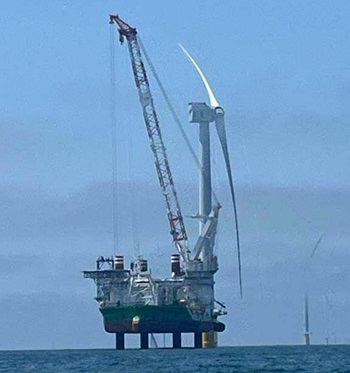 The discovery comes just days after the remaining piece of blade from a damaged offshore wind turbine fell into the Atlantic Ocean on Thursday. Vineyard Wind said on Saturday that it was sending additional resources to Nantucket and surrounding coastal communities after the remaining piece of blade from a damaged offshore wind turbine fell into the Atlantic Ocean on Thursday. “Members of the public should avoid handling debris as the fiber-glass pieces can be sharp and lead to cuts if handled without proper gloves,” the company said. “Vineyard Wind is working to bag, track and transport all debris off the island and to proper storage as soon as possible. Video, more, >>CLICK TO READ<< 06:27
The discovery comes just days after the remaining piece of blade from a damaged offshore wind turbine fell into the Atlantic Ocean on Thursday. Vineyard Wind said on Saturday that it was sending additional resources to Nantucket and surrounding coastal communities after the remaining piece of blade from a damaged offshore wind turbine fell into the Atlantic Ocean on Thursday. “Members of the public should avoid handling debris as the fiber-glass pieces can be sharp and lead to cuts if handled without proper gloves,” the company said. “Vineyard Wind is working to bag, track and transport all debris off the island and to proper storage as soon as possible. Video, more, >>CLICK TO READ<< 06:27
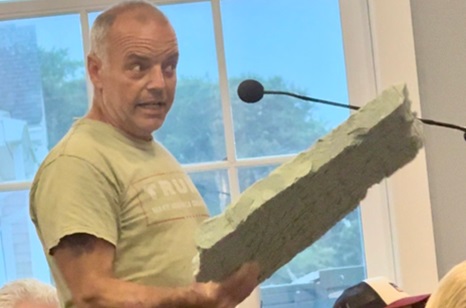
CMP Parent Company’s Offshore Wind Turbine Creates Environmental Disaster Off New England Coast
An offshore wind turbine project operated by Avangrid and Copenhagen Infrastructure Partners broke apart this week, scattering debris throughout Massachusetts’ coastal waters, with much of the flotsam washing up on Nantucket beaches. Since the turbine experienced a catastrophic malfunction — for reasons that are not yet clear — social media has been inundated with pictures and videos of beachgoers and government employees picking up trash bags and dumpsters full of debris. The turbine in question is owned by Vineyard Wind US, a joint project of Copenhagen Infrastructure Partners of Denmark and Avangrid, the parent company of Central Maine Power (CMP). The turbine itself was manufactured by GE Vernova, which has experienced similar failures in the past with their offshore wind projects. more, >>CLICK TO READ<< 08:53
Reagan Paul: Hope Floats, But Not for UMaine’s VolturnUS Floating Offshore Wind Platform
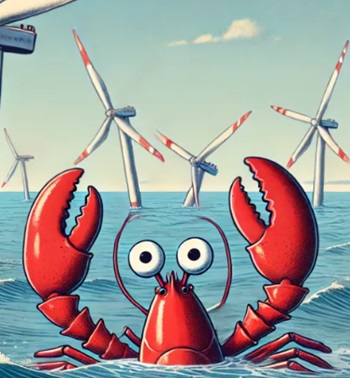 Last year, LD 1895 “An Act Regarding the Procurement of Energy from Offshore Wind Resources” passed, which got the ball rolling on Maine’s push for offshore wind port. The port will be the culmination of a more than decade-long taxpayer-funded effort to develop a floating offshore wind research array project, with the goal of eventually turning the Gulf of Maine into an industrialized wind farm. The viability of this technology was to be tested through an array of 12 wind turbines using the patented VolturnUS concrete, semi-submersible floating offshore wind turbine platform design created by Dr. Habib Dagher of the University of Maine, over the last decade. The Portland Press Herald conceded that this floating offshore wind research array project is too cost-prohibitive without an almost billion-dollar dedicated wind port facility off the coast of Maine, which means that a port must be constructed before the state can even move forward with the research array outlined in LD 1895. Enter Sears Island. more, >>CLICK TO READ<< 07:46
Last year, LD 1895 “An Act Regarding the Procurement of Energy from Offshore Wind Resources” passed, which got the ball rolling on Maine’s push for offshore wind port. The port will be the culmination of a more than decade-long taxpayer-funded effort to develop a floating offshore wind research array project, with the goal of eventually turning the Gulf of Maine into an industrialized wind farm. The viability of this technology was to be tested through an array of 12 wind turbines using the patented VolturnUS concrete, semi-submersible floating offshore wind turbine platform design created by Dr. Habib Dagher of the University of Maine, over the last decade. The Portland Press Herald conceded that this floating offshore wind research array project is too cost-prohibitive without an almost billion-dollar dedicated wind port facility off the coast of Maine, which means that a port must be constructed before the state can even move forward with the research array outlined in LD 1895. Enter Sears Island. more, >>CLICK TO READ<< 07:46
Scots overwhelmingly supportive of fishing sector – Polling shows UK-produced food as important as UK-produced energy
 A large majority of Scots are backing the fishing industry amid growing pressure on fishing grounds, in a reminder to politicians not to neglect an important sector ahead of the general election. A new poll commissioned by the Scottish Fishermen’s Federation (SFF) reveals that 19 in 20 (95.7%) of Scots believe it is important for the UK to retain control over its fisheries. The poll also highlights that 91% agree fishing is a vital part of the UK economy. Additionally, 89.7% of people agree that UK-produced food is just as important as UK-produced energy. These issues will be debated by an election hustings panel including Kate Forbes, Rhoda Grant, Rachael Hamilton and Alastair Carmichael in Edinburgh tomorrow (12 June) at an event hosted by SFF. Please find attached the release and images for use. Please let me know if you have any further questions. Thanks.
A large majority of Scots are backing the fishing industry amid growing pressure on fishing grounds, in a reminder to politicians not to neglect an important sector ahead of the general election. A new poll commissioned by the Scottish Fishermen’s Federation (SFF) reveals that 19 in 20 (95.7%) of Scots believe it is important for the UK to retain control over its fisheries. The poll also highlights that 91% agree fishing is a vital part of the UK economy. Additionally, 89.7% of people agree that UK-produced food is just as important as UK-produced energy. These issues will be debated by an election hustings panel including Kate Forbes, Rhoda Grant, Rachael Hamilton and Alastair Carmichael in Edinburgh tomorrow (12 June) at an event hosted by SFF. Please find attached the release and images for use. Please let me know if you have any further questions. Thanks.Harris: No offshore wind turbines
 Warning of dire consequences if offshore wind industrialization is allowed off Maryland’s Atlantic coast, three legislators called on experts to bolster their call to halt construction of wind turbines off the mid-Atlantic coast. Harris was joined by New Jersey Congressmen Jeff Van Drew (R) and Chris Smith (R). Six experts testified and answered questions from the legislators. whose districts “are directly impacted” by “offshore wind industrialization,” according to news releases issued by the congressmen’s offices. Harris doubted that “the average person would be willing to pay the extra taxes and extra rates in order to develop a source of energy that … is roughly four times as expensive as what your current source of energy is,” he said. “That impacts everyone whether or not you live on the Shore.” 12 photos, more, >>click to read<< 06:55
Warning of dire consequences if offshore wind industrialization is allowed off Maryland’s Atlantic coast, three legislators called on experts to bolster their call to halt construction of wind turbines off the mid-Atlantic coast. Harris was joined by New Jersey Congressmen Jeff Van Drew (R) and Chris Smith (R). Six experts testified and answered questions from the legislators. whose districts “are directly impacted” by “offshore wind industrialization,” according to news releases issued by the congressmen’s offices. Harris doubted that “the average person would be willing to pay the extra taxes and extra rates in order to develop a source of energy that … is roughly four times as expensive as what your current source of energy is,” he said. “That impacts everyone whether or not you live on the Shore.” 12 photos, more, >>click to read<< 06:55
Environmentalists face off against environmentalists over offshore wind projects
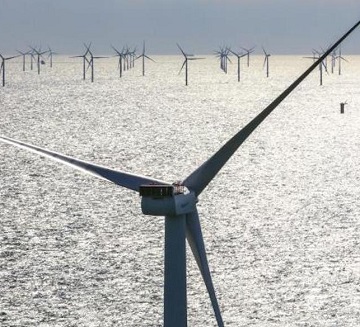 The Energy Department estimates offshore wind turbines could produce as much as 20% of regional power needs along the densely populated Eastern Seaboard from Florida to Maine by 2050. To reach that goal, the Biden administration had hoped to green-light 30 gigawatts from utility-scale offshore wind farms by 2030—enough to power nine million homes. That now seems wildly ambitious, as billions of dollars in projects have been canceled amid staggering cost overruns, soaring interest rates and supply-chain delays. Added to these economic woes are persistent environmental concerns, as attested to by some recent federal lawsuits. In September, for example, Cape May County, N.J., and a coalition of regional environmental, fisheries and tourism groups sought to stop development of two utility-scale projects off the New Jersey coast. more, >>click to read<< 11:54
The Energy Department estimates offshore wind turbines could produce as much as 20% of regional power needs along the densely populated Eastern Seaboard from Florida to Maine by 2050. To reach that goal, the Biden administration had hoped to green-light 30 gigawatts from utility-scale offshore wind farms by 2030—enough to power nine million homes. That now seems wildly ambitious, as billions of dollars in projects have been canceled amid staggering cost overruns, soaring interest rates and supply-chain delays. Added to these economic woes are persistent environmental concerns, as attested to by some recent federal lawsuits. In September, for example, Cape May County, N.J., and a coalition of regional environmental, fisheries and tourism groups sought to stop development of two utility-scale projects off the New Jersey coast. more, >>click to read<< 11:54
NOAA Is Rolling Out a Plan to Radically Expand Offshore Aquaculture. Not Everyone Is Onboard
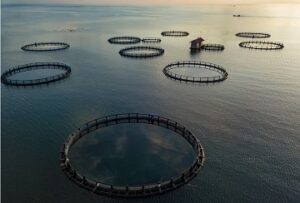 The cardboard gravestones read “RIP Local fisherman,” “RIP Wild Fish,” and “RIP Humpback Whales.” Assembled in response to new aquaculture sites planned off the coast of California, the gravestones were brought to the offices of the National Oceanic and Atmospheric Administration (NOAA) in Long Beach, California, in April by activists keen to register their discontent. The sites pave the way for possibly dozens of new open-pen fish farms as far as three miles offshore, the future home of species that range from carp to salmon. Chief among the protesters’ concerns were entanglement of marine mammals, the expansion of dead zones caused by fish excrement, and infringement on wild fishing grounds. >click to read< 09:07
The cardboard gravestones read “RIP Local fisherman,” “RIP Wild Fish,” and “RIP Humpback Whales.” Assembled in response to new aquaculture sites planned off the coast of California, the gravestones were brought to the offices of the National Oceanic and Atmospheric Administration (NOAA) in Long Beach, California, in April by activists keen to register their discontent. The sites pave the way for possibly dozens of new open-pen fish farms as far as three miles offshore, the future home of species that range from carp to salmon. Chief among the protesters’ concerns were entanglement of marine mammals, the expansion of dead zones caused by fish excrement, and infringement on wild fishing grounds. >click to read< 09:07

Energy industry uses whale activists to aid anti-wind farm strategy, experts say
One night in late March, J Timmons Roberts, a professor of environmental studies at Brown University, stepped in to a high school gymnasium in a small seaside town in Rhode Island. He was there to speak at a town hall aimed at allaying concerns about a local offshore windfarm. In the front row, he noticed a woman dressed as a whale, holding a sign that read “Save Me!” The woman in the front row was Mary Chalke, co-founder of the Save Right Whales Coalition (SRWC), a group of organizations across the east coast that oppose offshore wind projects, arguing they pose an existential risk to the endangered North American right whale. That night at the town hall, Roberts also spotted Elizabeth Knight, who founded Green Oceans earlier this year, another anti-wind organization in Rhode Island. Roberts said he felt compassion for Knight. “She thinks a train wreck is coming,” said Roberts. >click to read< 10:17

GAO to investigate New Jersey ‘offshore wind industrialisation’
The Government Accountability Office (GAO), an independent congressional watchdog, has agreed to launch an investigation into the impact of the development of windfarms offshore New JerseyThe investigation will examine the potential effects of the development of offshore wind on the environment, fishing industry, military operations, navigational safety and other issues, said Representative Chris Smith (R-NJ). Representative Smith said the GAO would conduct an “aggressive, independent investigation” into what he claimed are the “ocean-altering impacts of the 3,400 offshore wind turbines slated for the Jersey shore” and “address concerns” that, he claimed, “the Biden Administration and Governor Murphy continue to dismiss. >click to read< 07:44
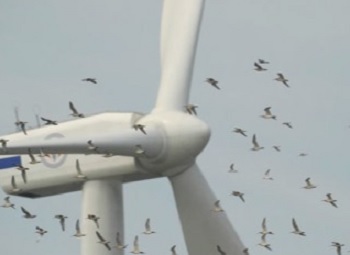
Global Wind Day, Environmental Nightmare
June 15 was Global Wind Day. Its European industry sponsors hope to promote the “power and possibilities” of wind turbines. But beware the Ides of June. Wind turbines have been sold to us as a means of reducing emissions, global warming and climate change. Although there are a lot of wind turbines installed around the world with many more seemingly to come, they have not reduced emissions, warming or climate change. And they offer no chance to do so, even if those things were desirable. Coming eight days short of the 35th anniversary of James Hansen’s Senate testimony that sent the world into global warming panic, it’s clear to anyone who cares to look that emissions have nothing to do with recent warming. >click to read< 08:55
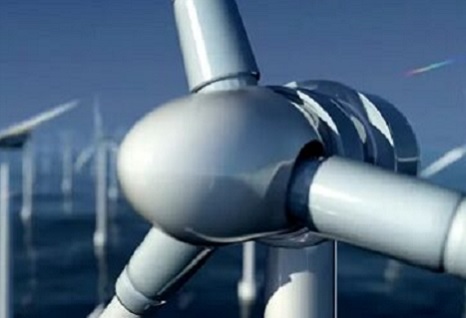
Wind project scope ‘staggering’
It wasn’t “until the whales and the dolphins started washing up that people’s attention was able to focus” on the offshore wind farms, according to Cindy Zipf, and when people looked beyond the whales, they realized what is happening is “staggering.” “I don’t think ever in the history of mankind have we proposed to industrialize an ecosystem this fast and at this magnitude,” she said. Zipf is executive director of Clean Ocean Action, a coalition of groups dedicated to protecting the ocean. Zipf acknowledges the pace at which the plans are moving forward is making efforts to slow or stop them difficult. “It’s challenging considering how fast-tracked everything is and how limited the permitting process is. It’s kind of under the jurisdiction of two people to make it happen, President Biden and Gov. Murphy,” she said. “Hopefully as more is understood there will be some more caution but as it is right now the (state and federal) agencies are very enthusiastic.” >click to read< 16:29
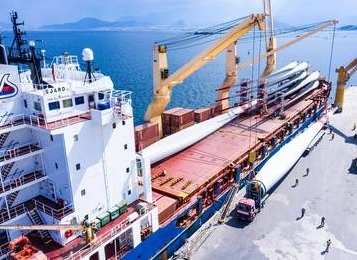
US Coast Guard Warns on Vessels Importing Wind Turbine Parts
The US Coast Guard Inspections and Compliance Directorate has released Marine Safety Information Bulletin 04-23 to advise mariners that an increasing number of break-bulk and retrofitted bulk carriers are arriving in the U.S. carrying wind turbine parts stowed in a manner that substantially limits visibility from the navigation bridge. In many cases, the vessels have been temporarily exempted from compliance with SOLAS 1974 Chapter V, Regulation 22, by their flag administration even though the vessel’s intended voyage requires substantial transit in restricted and congested waterways. The SOLAS requirements specify: >click to read< 14:37
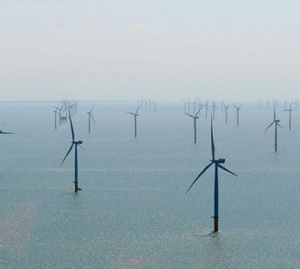
Lawsuit claims US federal government violated regulations in approving Massachusetts offshore wind project
A Texas non-profit research institute that aims to promote free enterprise in Texas and the nation is acting on behalf of fishing companies in Massachusetts, a state 2,000 miles away, in a lawsuit that seeks to stop development of the Vineyard Wind offshore wind project. The Texas Public Policy Foundation (TPPF) has named the US Department of the Interior, the US Department of Commerce, the US Department of Defense and other agencies and individuals as defendants in the suit. The lawsuit, filed in December 2021, claims the defendants violated the Outer Continental Shelf Lands Act, the Endangered Species Act, the Clean Water Act, the Marine Mammal Protection Act, the National Environmental Policy Act, and their respective rules and regulations. >click to read< 10:54
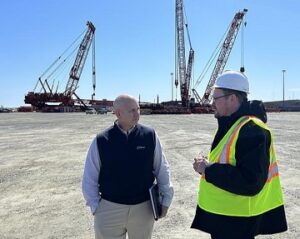
Offshore Wind Farm Company Vinyard Wind Begins Construction
Vineyard Wind hosted a tour on Monday at the Marine Commerce Terminal in New Bedford to show members of the media and the local business leaders of One SouthCoast Chamber the early construction of the Vineyard Wind 1 Project, the first offshore commercial-scale offshore wind project in the United States. The Vineyard Wind 1 project aims to construct an 800-megawatt, 62-turbine wind farm south of Martha’s Vineyard and Nantucket. The project is expected to be completed and delivering power by the end of the year. >click to read< 11:50
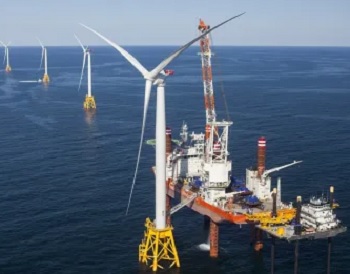
4 lawsuits threaten Vineyard Wind
The lawsuits against America’s first major offshore wind project are coming to a head. Four cases are challenging the federal environmental permit issued to Vineyard Wind, a 62-turbine facility being planned for construction in the waters off Martha’s Vineyard. A federal judge in Massachusetts heard arguments brought by landowners in two cases in recent weeks. The other two suits, brought by fishing groups, have been consolidated and will appear before the same judge for oral arguments in Boston on Monday. The cases against Vineyard Wind allege that the Bureau of Ocean Energy Management conducted an inadequate environmental review when it approved the project by failing to account for its impact on everything from fishermen to the critically endangered North American right whale. >click to read< 07:32
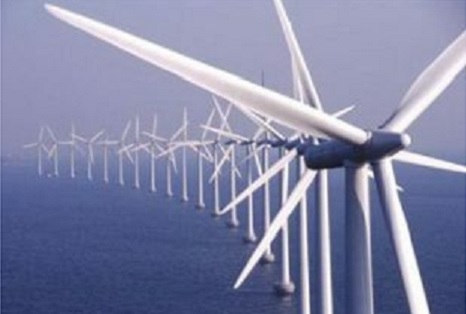
Nils Stolpe: How many statisticians does it take to….
Screw in a lightbulb? Trivialize the deaths of at least two dozen whales? Convince the world that the massive installation of wind power off our East Coast won’t irreparably damage our estuarine, inshore and offshore ecosystems? The folks at NOAA/NMFS (and with the convenient parroting of myriad so-called environmentalists, and BOEM, the other part of the federal cheerleading squad selling Ocean Wind as a major solution to our “energy crisis”) have declared that it hasn’t been proven that there aren’t any relationships between the extensive survey work being committed by Big Wind and the associated contractors and the two dozen deaths that have been visited upon several species of whales off New York and New Jersey. What is their proof? Inadequately enough, their “proof” boils down to the fact that they have seen no proof. To my way of thinking, that’s tantamount to convicting someone of murder because there is no proof that he or she isn’t a murderer. But it appears as if, as far as dead whales and President Biden’s and New Jersey’s Governor Murphy’s windmill fantasies are concerned, that’s good enough. At least for NOAA/NMFS, BOEM and a bunch of environmental organizations. Why? >click to read< 09:54

Biden’s Budget More Than Doubles Funding For Offshore Projects, Potentially ‘Putting American Fisherman Out Of Business’
Biden’s budget allocates $60 million to expand the National Oceanic and Atmospheric Administration’s (NOAA) offshore wind permitting activities, an initiative fishermen say will damage their businesses and environmental groups warn could be killing whales. Experts warn that wind projects disrupt the whale’s habitats and generate disorienting noise, factors that could be contributing to a recent increase in whale deaths. So far, their requests for the Biden administration to investigate have been fruitless. Fishermen are also sounding the alarm on offshore wind efforts. “Offshore wind will put American fishermen out of business,” said commercial fisherman Jerry Leeman. >click to read< 08:02
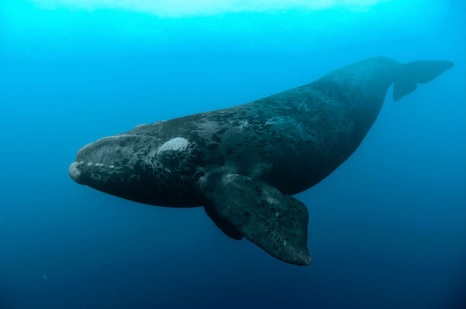
The Whale slaughter continues, but is this just the beginning? By Jim Lovgren
Another Humpback Whale washed ashore on a New Jersey beach on March 1st , the 12th known Whale to die since the start of December, along the New York, New Jersey shoreline, coincident with multiple research vessels using active Sonar, seismic Pingers, and Ultra High Resolution Seismic sparkers. As more research vessels ply our waters, more dead Whales wash up on the beach. This is just the start of the gigantic ecosystem changing industrialization of the US continental shelf from the Gulf of Maine to Florida. We now have 23 dead Whales on the east coast within a three month period, and despite what government officials claim, it is not a normal amount. >click to read< 07:55

NOAA and BOEM; Ignorance is Bliss. By Jim Lovgren
For about twenty years the Natural Resources Defense Council [NRDC] engaged the US Navy in a legal battle over the effects of the Navy’s use of Mid Frequency Sonar in training exercises and its impact on marine mammals and other creatures, with one case even reaching the US Supreme court. While there are many different aspects of NRDC’s legal actions, the results of the litigation have produced an enormous amount of scientific data and research regarding the effects of underwater sound on marine creatures, with an emphasis on Sonar and marine mammals. They forced the Navy to admit that their use of sonar had resulted in the unintentional mass strandings of many different marine Mammals in a dozen different instances around the world, primarily involving Beaked whales, that are classified as being low to mid frequency cetaceans. >click to read< 08:48
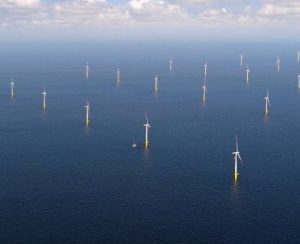
Doomed to Fail: In the Northeast and Mid-Atlantic, a quiet reckoning over offshore wind
Crippling European electricity prices, soaring Northeastern heating bills, looming diesel-fuel shortages, and OPEC+ drama have captured headlines for months. More quietly, offshore-wind energy developers are discovering their projects’ economic infeasibility, undermining states’ offshore-wind goal of generating 40,000 MW by 2040. The Biden Administration must recognize this is a pipe dream, or it will cost Americans billions trying to salvage an industry doomed to fail. October brought the first sign of troubles,,, Massachusetts’ Commonwealth Wind, Mayflower Wind project, New Jersey Ocean Wind. All three project developers originally negotiated prices far above wholesale market prices. All three qualified for a production tax credit and additional offshore-wind state tax credits. All three will qualify for a new 30 percent offshore wind investment tax credit which was not available when they made their initial bids. Yet this federal and state largesse has still failed to keep the projects afloat. >click to read this< 18:17

Wind Projects Off New England Put Endangered Right Whales at Risk, Warns NOAA Scientist
Planned wind projects off the New England coast threaten to harm the region’s dwindling population of endangered right whales, according to a US government marine scientist. The warning from a top National Oceanic and Atmospheric Administration official, obtained by Bloomberg under a Freedom of Information Act request, underscores the potential legal and environmental perils of offshore wind development along the coast. President Joe Biden has a goal of deploying 30 gigawatts of offshore wind within the decade. Both initial construction of wind projects and decades of expected operation threaten to imperil right whales in southern New England waters, Sean Hayes, chief of the protected species branch at NOAA’s National Northeast Fisheries Science Center, said in a May 13 letter to Interior Department officials. >click to read< 11:26
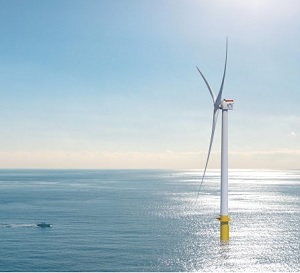
Ocean City Presses Fight Against Offshore Wind Farm
The city has intensified its criticism of plans by developer Orsted, a Danish energy company, to run a transmission line under Ocean City’s streets to connect the offshore wind turbines to the land-based power grid at the former B.L. England Generating Station in Marmora. Critics have assailed the project as an offshore “industrial park” that would harm the environment, marine life, the commercial fishing industry and the shore’s critical tourism industry. They also say the towering turbine blades would be a visual blight when viewed from shore. “It affects all of our livelihoods,” said Michael DeVlieger, a former Ocean City councilman who is an outspoken opponent of the wind farm. >click to read< 11:40
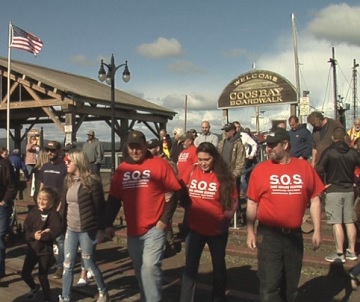
Fishermen rally in Coos Bay against offshore wind farm
Fishermen along Oregon’s coast traveled great distances to get to Coos Bay Tuesday. They’re hoping to bring awareness to their beloved industry in the face of coming offshore wind farms. Fishermen and seafood processors are taking to the streets in support of the slogan, “Protect U.S. Fishermen.” The seafood community was joined by their families and supporters to rally at the Coos Bay Boardwalk ahead of a march down Front St. to the Coos Museum. “A lot of these wind farms that are coming in are right in the middle of prime commercial fishing grounds,” says Justin Johnson, a Newport fisherman. >click to read< 09:49
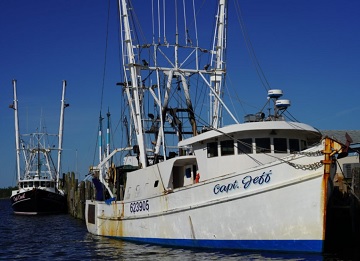
North Carolina: Offshore wind turbines interfere with ships’ radar, ability to navigate
Gov. Roy Cooper and the Biden Administration want to make North Carolina carbon neutral by 2050, and President Biden’s ambitious plans to combat climate change lean heavily on offshore wind generation. The turbines could be a problem for fishermen. North Carolina’s fishing industry has largely been cautious in criticizing the wind turbines, saying it wants to wait for more information. “Demolition derby on the high seas thanks to offshore industrial wind turbines? Amy Cooke asked. “Add maritime navigation and radar challenges to the long list of reasons, including high cost, unreliability, environmental damage and misleading nameplate capacity, as to why offshore industrial wind is absolutely horrible public policy.”>click to read< 11:13
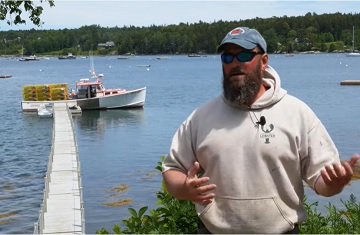
Save the Gulf of Maine –The Maine Reset, Ep6: Small Fish in a Big Sea
Sedgwick, ME Lobsterman Brian Tripp shares his story, what he loves about lobstering & what he is most concerned about for the future. MLA’s Patrice McCarron talks about the legal fight to protect Maine’s fishing heritage. >click to watch the video< – This Vimeo video, Like Skyrocketing Electric Bills? Then You’ll LOVE Offshore Wind! is Ep: 5, which wasn’t allowed on You Tube, >Click to watch<. It’s a rigged game, and we are the pawns. To see all the videos in this series, >click here< 10:52






